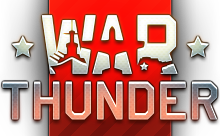aircraft/loadouts Dassault/Dornier Alpha Jet for Germany
Should the Alpha Jet be added to War Thunder?
376 members have voted
- Prev
- 1
- 2
- 3
- 4
- 5
- 6
- Next
- Page 1 of 8
- Prev
- 1
- 2
- 3
- 4
- 5
- 6
- Next
- Page 1 of 8

This topic is now closed to further replies.
Share
Followers
0
-
Recently Browsing 0 members
No registered users viewing this page.
